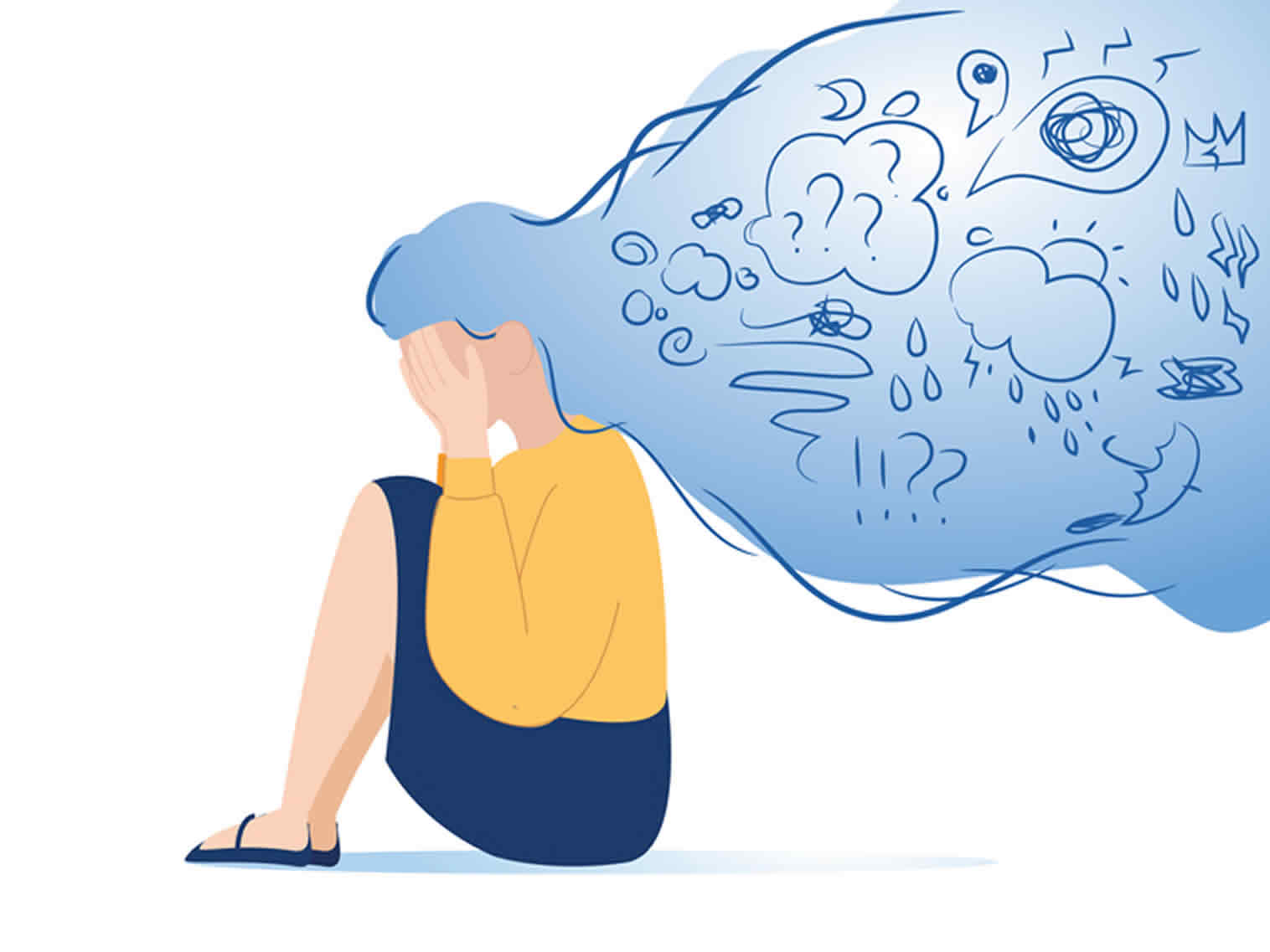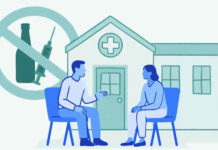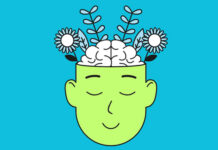Anxiety and addiction are two powerful forces that can trap individuals in a painful cycle. Anxiety can drive people toward substances or addictive behaviors in search of relief, while addiction can worsen anxiety over time, creating a self-perpetuating loop that’s difficult to escape. For many, this combination often called a co-occurring disorder or dual diagnosis requires specialized treatment that addresses both conditions simultaneously. Understanding the deep connection between anxiety and addiction is the first step toward effective, lasting recovery.
1. The Hidden Connection Between Anxiety and Addiction
Anxiety is one of the most common mental health challenges worldwide. It encompasses a range of conditions such as generalized anxiety disorder, social anxiety disorder, panic disorder, and phobias that affect how individuals think, feel, and interact with the world. People with anxiety may experience racing thoughts, restlessness, physical symptoms like a rapid heartbeat, and an overwhelming sense of worry or fear.
When these feelings become unbearable, many individuals turn to substances or addictive behaviors as a way to self-medicate. Alcohol, prescription medications, cannabis, or illicit drugs may offer temporary relief by numbing uncomfortable emotions or slowing down an overactive mind. Unfortunately, this relief is fleeting. Over time, reliance on substances rewires the brain’s reward system, leading to dependency. Meanwhile, the original anxiety often intensifies, particularly during withdrawal periods.
This creates a vicious cycle:
- Anxiety arises, leading the individual to seek temporary relief.
- Substance use provides short-term comfort but alters brain chemistry.
- Tolerance and dependency develop, requiring more substance use.
- Anxiety worsens due to chemical imbalances, guilt, shame, or withdrawal.
- The person uses substances again to escape the heightened anxiety.
Breaking this cycle requires more than treating addiction alone. Both the anxiety and the addiction must be addressed together through an integrated treatment approach.
2. How Anxiety Fuels Addiction
Understanding why anxiety often leads to addiction can help individuals and professionals craft more effective treatment plans. Common reasons include:
- Self-Medication: Many people use alcohol or drugs to “take the edge off” anxiety symptoms. For example, someone with social anxiety might drink heavily at social events to feel more confident.
- Escape Mechanism: Substances can temporarily distract from racing thoughts or physical tension, offering a brief mental “break.”
- Physiological Relief: Some substances, like benzodiazepines, directly suppress anxiety symptoms. Overuse, however, can quickly lead to tolerance and dependence.
- Lack of Coping Skills: Without healthy coping mechanisms—like therapy, mindfulness, or support—individuals may rely on substances as their only tool to manage stress.
Ironically, substances that initially provide relief eventually exacerbate anxiety. Alcohol, for example, can increase anxiety once its sedative effects wear off. Stimulants like cocaine or methamphetamines can trigger panic attacks or paranoia. Even cannabis, often thought to calm nerves, can lead to heightened anxiety and panic in some users.
3. How Addiction Worsens Anxiety
Just as anxiety can lead to addiction, addiction itself can make anxiety far more intense:
- Withdrawal Effects: Many substances cause anxiety during withdrawal. Alcohol withdrawal can lead to agitation and panic, while stimulant withdrawal can cause extreme nervousness and restlessness.
- Chemical Imbalances: Prolonged substance use disrupts neurotransmitters like dopamine, serotonin, and GABA—chemicals that regulate mood and anxiety.
- Lifestyle Consequences: Addiction often brings financial stress, damaged relationships, and legal issues, all of which fuel anxiety.
- Sleep Disruption: Substance use and withdrawal often interfere with sleep, and chronic sleep deprivation intensifies anxiety symptoms.
- Guilt and Shame: Many individuals struggling with addiction feel guilt over their behavior, which can heighten anxiety and hinder recovery.
This reciprocal relationship makes treating only one condition ineffective. Without addressing anxiety, the likelihood of relapse remains high.
4. Integrated Treatment: Addressing Both Anxiety and Addiction
The most effective way to treat co-occurring anxiety and addiction is through integrated treatment, where both conditions are treated simultaneously by a coordinated team of professionals. This approach acknowledges that one disorder influences the other and that lasting recovery depends on healing both the mind and body.
A. Medical Detox and Stabilization
For individuals dependent on substances, medical detoxification may be the first step. Detox helps the body safely clear substances under professional supervision. During this phase, medications may be used to reduce withdrawal-related anxiety, ensuring the process is as safe and comfortable as possible.
However, detox alone is not treatment—it’s the beginning of the recovery journey.
B. Psychotherapy and Counseling
Therapy is the cornerstone of anxiety and addiction treatment. It provides individuals with tools to understand their behaviors, manage their emotions, and build healthier coping mechanisms.
- Cognitive Behavioral Therapy (CBT): CBT helps individuals identify distorted thought patterns that fuel anxiety and addictive behaviors. By challenging these thoughts and replacing them with healthier perspectives, CBT reduces both anxiety and the urge to use substances.
- Dialectical Behavior Therapy (DBT): DBT focuses on emotional regulation, mindfulness, and distress tolerance—skills especially helpful for individuals who use substances to escape intense emotions.
- Exposure Therapy: For anxiety disorders like phobias or PTSD, gradual exposure in a controlled setting can reduce fear and dependence on substances for relief.
- Group Therapy: Sharing experiences with others facing similar struggles fosters support, accountability, and reduced isolation.
C. Medication Management
In some cases, medications may be prescribed to help stabilize mood and reduce anxiety without triggering addiction. Non-addictive anti-anxiety medications or antidepressants (such as SSRIs or SNRIs) can help restore chemical balance in the brain. Importantly, these medications are managed carefully to avoid replacing one dependency with another.
D. Lifestyle Changes and Holistic Therapies
Recovery from anxiety and addiction isn’t only about therapy and medication. Lifestyle modifications play a crucial role in supporting long-term mental health:
- Regular exercise: Physical activity releases endorphins and reduces stress.
- Balanced nutrition: Proper diet supports brain chemistry and overall health.
- Mindfulness and meditation: Techniques like deep breathing, yoga, and mindfulness help calm the nervous system and reduce anxiety.
- Sleep hygiene: Prioritizing healthy sleep patterns helps regulate emotions and anxiety.
- Creative outlets: Art, music, or journaling can provide healthy ways to express emotions.
Many treatment centers now incorporate holistic approaches like acupuncture, equine therapy, or nature-based therapy alongside traditional methods.
5. The Role of Aftercare and Support Systems
Recovery from anxiety and addiction is a lifelong process, not a one-time event. Aftercare programs are essential to maintain progress and prevent relapse. These may include:
- Ongoing therapy: Regular sessions help individuals navigate post-treatment challenges.
- Support groups: Organizations like SMART Recovery, Alcoholics Anonymous (AA), or Dual Recovery Anonymous (DRA) offer peer support and accountability.
- Family involvement: Educating and involving family members creates a supportive home environment and reduces misunderstandings.
- Relapse prevention planning: Learning to identify triggers, manage stress, and seek help early can prevent setbacks.
6. Breaking the Cycle
Anxiety and addiction may feel like intertwined chains, but with the right treatment, those chains can be broken. Integrated treatment acknowledges the complexity of the relationship between the two, helping individuals not only achieve sobriety but also find peace of mind. Recovery is not about perfection; it’s about progress, resilience, and learning healthier ways to live.
Anxiety and addiction feed off each other, creating a cycle that can seem impossible to escape. But with comprehensive, compassionate, and integrated treatment, individuals can reclaim control over their lives. By addressing both conditions together—through therapy, medical care, lifestyle changes, and ongoing support—true healing becomes not just possible, but sustainable.
Every step taken toward recovery is a step toward freedom—freedom from fear, dependency, and the burdens of the past.















